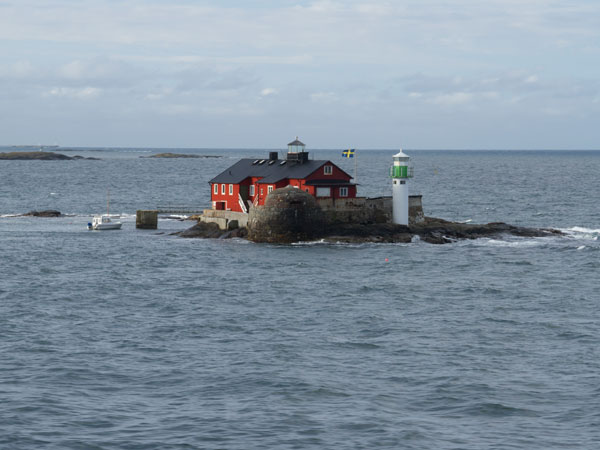As part of the research project SHIPNOISE, the Swedish National Road and Transport Research Institute (VTI) performs measurements and calculations to assess the possible impact of ship noise on human health.
This type of research is common for road, rail and aviation; for example, we know that people who live in locations exposed to constant noise from road traffic have an increased risk of cardiovascular disease. However, thus far there has been no corresponding research into maritime traffic and the lack of knowledge is a concern for cities planning to build homes close to major shipping lanes.

Above the surface, the funnels of vessels are the major source of airborne noise, transmitting the rumble of engines. This low-frequency noise is problematic, as it spreads widely and is not dampened by the walls and windows of a house to the same extent as higher frequencies.
“When it comes to noise of such low frequencies, the difference between barely hearing the sound and being disturbed by it is negligible. As soon as we hear low-frequency sound, it is disturbing and may affect sleep and recovery,” says Anders Genell, senior researcher at VTI.
Underwater noise disturbs animals
The SHIPNOISE project is managed by VTI and funded by the Swedish Transport Administration. IVL Swedish Environmental Research Institute assists by taking measurements of underwater noise. Beneath the surface, ships’ propellers are the main source of noise. This is due to something called cavitation, when increased pressure due to propeller rotation causes steam bubbles to implode. Engine noise also spreads underwater, meaning that noise pollution occurs at many different frequencies. Sound travels ten times as far underwater as it does in the air, and research has shown that this can negatively impact marine wildlife in various ways, including disrupting their communication.
The SHIPNOISE project has developed a method for measuring both airborne and waterborne noise from vessels using a fairway. A measuring station was constructed and installed on Böttö, a rocky islet at the entrance to the Port of Gothenburg containing a disused lighthouse. The islet is adjacent to one of the port’s main fairways.
Compared with guide levels
Data collection is complete and analysis will take place during the winter and spring. This task includes estimating how far noise generated by vessels spreads and what levels might be expected inside buildings. This will be compared with guide levels for low-frequency noise indoors prepared by the National Board of Health and Welfare and Public Health Agency of Sweden.
“If we discover that low-frequency noise exceeds Public Health Agency of Sweden guidelines, we will recommend that further studies are conducted,” says Anders Genell.
VTI is also involved in another research project looking at ship noise, Silent@Sea. In this project, noise from vessels with different propulsion systems, such as diesel, electricity or liquefied natural gas (LNG), will be compared. Four shipping companies are involved in the project, which among other things will measure noise levels in the onboard work environment.
Text: Johan Sievers/redakta
Translation by: Semantix AB
Contact:

Anders Genell
anders.genell@vti.se
VTI, Swedish National Road and Transport Research Institute, Sweden






Follow us: